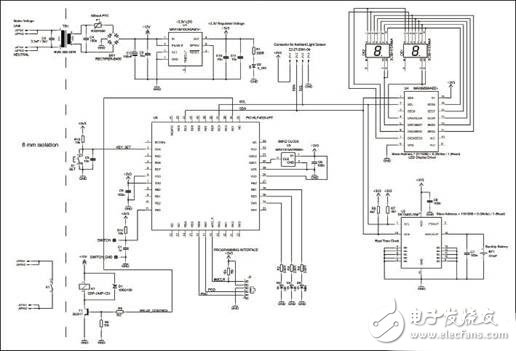Outdoor lighting is usually controlled by a manually operated mechanical switch that turns the lighting system on or off. In order to save energy, you may not want to turn on the lighting system in an area all night. In this case, if you can precisely control the lighting system, automatically turn the lighting system on or off when necessary, it will bring more Convenience conditions. The ambient light intensity can be detected by the controller, the light is turned on when it is dark and kept at a certain time interval, and then the light is automatically turned off at a specified time. In the morning, the process is reversed. If the ambient light intensity is still below the preset lighting threshold for a predetermined period of time, the system will turn on the light. When the ambient light is bright enough, the system will turn off the light. Using ambient light sensors (ALS) to detect and measure ambient light intensity, it is not difficult to design an intelligent lighting controller accordingly. Since the controller is equipped with a real-time clock (RTC), the lighting system can also be turned on or off at a specified time. The management system described in this article can be used in commercial lighting systems.
Integrated system component
The lighting controller in this design uses ALS to measure ambient light. There are currently two different types of ALS on the market: one that produces an analog voltage proportional to the ambient light level and one that provides a digital output. This system uses digital output ALS. The controller needs to know the exact time, so the real-time clock (RTC) is used. Considering that a power outage may occur, the time information needs to be backed up. Set time and other parameters through the user interface. The user interface here includes two 7-segment LED displays and a button. When the button is pressed shortly, the system displays the time and other parameters; when the button is pressed, the time and parameters can be adjusted. The system has an automatic/manual switch to enable manual control of the light. The system is powered by the mains, and the lighting system turns the power on/off through a relay. The digital signal of the system is electrically isolated from the mains.
In manual mode, the auto/manual switch must be switched to the manual position. In manual mode, the relay remains on and the lighting system is turned on/off by a standard wall control switch. When the manual/auto switch is in auto mode, the wall control switch must be turned on to ensure proper operation of the controller. If the wall switch is not turned on, the controller will not be able to control the lighting. The lighting system may contain multiple lights.

Figure 3 system schematic
With modern semiconductor technology, the system measures ambient brightness and controls the on/off of the lighting system in a preset manner. This article describes how to design a controller solution that enables intelligent lighting management based on ambient light and time information, which is ideal for utility lighting systems.
Camera Filter,Camera Polarizer Lens,Camera Raw Filter,Lens Filter
Shaoxing Shangyu Kenuo Photographic Equipment Factory , https://www.kernelphoto.com
